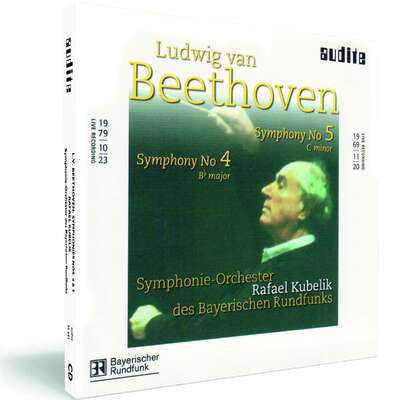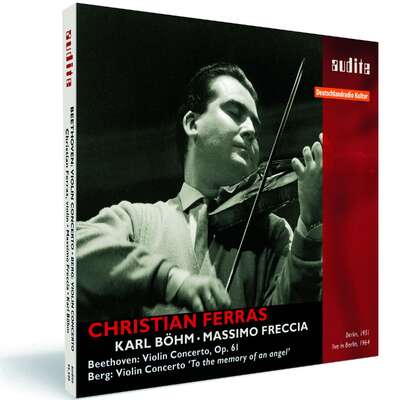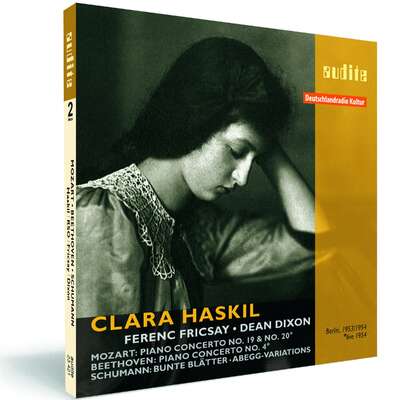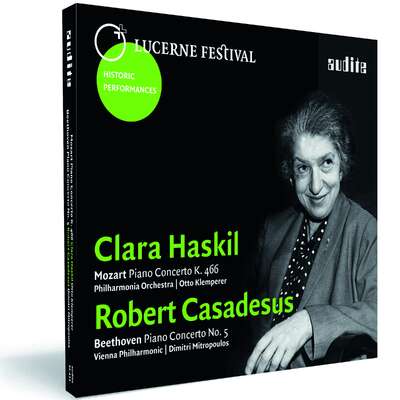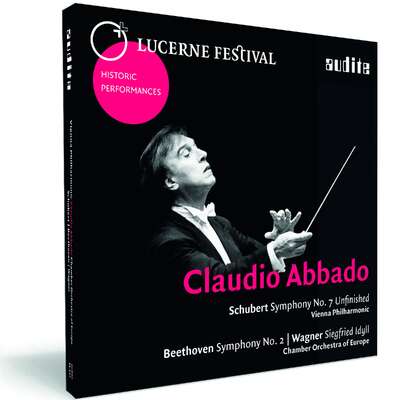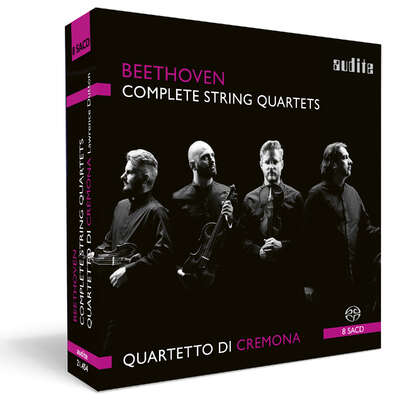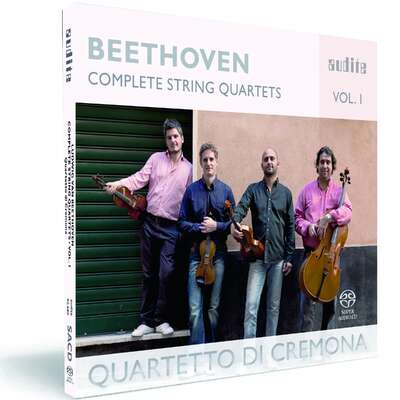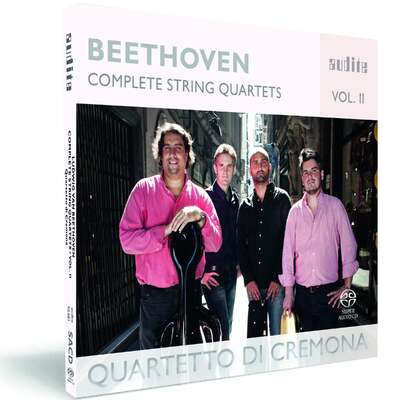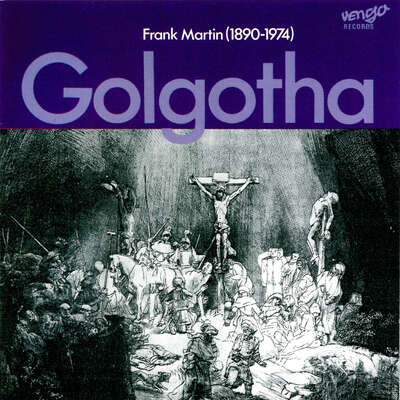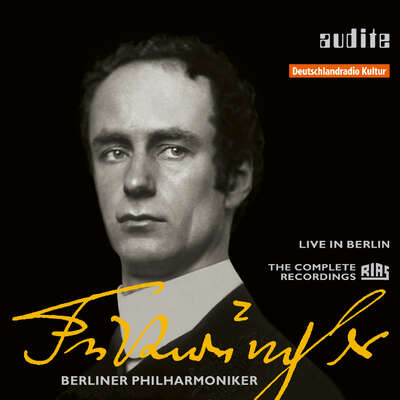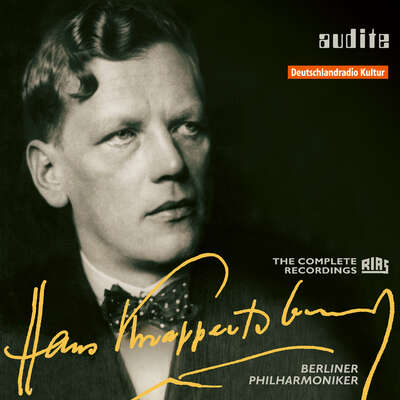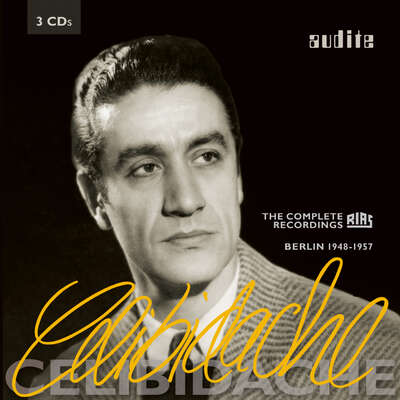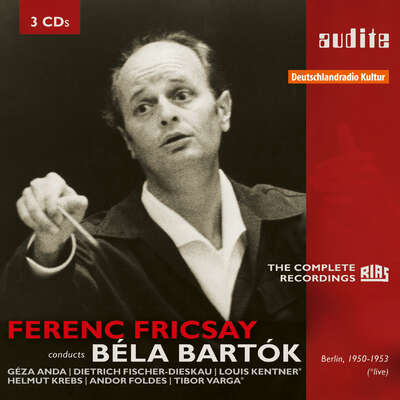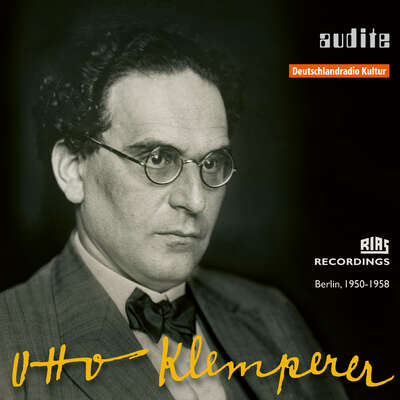
“My first encounter with Beethoven goes way back. Already as a child I wanted my parents to give me the scores of the Beethoven symphonies... I could read music before learning to write and do arithmetic. I read the scores in bed and under my desk at school... These first impressions were...more
"Große Musikerpersönlichkeiten faszinieren oft dadurch, dass sie das schon Bekannte in neuem Licht erscheinen lassen - was auch hier gelungen ist." (WDR3 Hörproben)
Details
| Ludwig van Beethoven: Symphony No. 4 & No. 5 | |
| article number: | 95.493 |
|---|---|
| EAN barcode: | 4022143954930 |
| price group: | BCB |
| release date: | 1. March 2003 |
| total time: | 70 min. |
Informationen
“My first encounter with Beethoven goes way back. Already as a child I wanted my parents to give me the scores of the Beethoven symphonies... I could read music before learning to write and do arithmetic. I read the scores in bed and under my desk at school... These first impressions were colossal - they were indelible and have remained with me ever since.“ (Rafael Kubelik)
audite continues its series with Rafael Kubelik and the Bavarian Radio Symphony Orchestra, a series which has won several prizes. Two symphonies of Ludwig van Beethoven are being released as live recordings for the first time.
Beethoven’s Fourth has always been somewhat overshadowed by the revolutionary Eroica and the weighty, fateful Fifth; it has never been as frequently programmed as have these others. Unjustly so, for Rafael Kubelik’s interpretation reveals the Fourth to be an enormously multi-layered composition. This impression already begins with the first movement’s extremely tense, exciting introduction. It is able to develop its key effect for the work by persisting consequently in the slow Adagio and remaining “sempre pianissimo“ except for a few outbursts. It becomes clear, when comparing the work to the Fifth, that both symphonies are “typical“ Beethoven in different ways, with enormous expressive depth and complex formal structure. In both works, each thematic development and harmonic progression is of significance in the overall dramaturgy.
Kubelik and the Bavarian Radio Symphony Orchestra make the most of the composed contrasts and extremes in each of these works. In live recordings made in the years 1979 (Fourth) and 1969 (Fifth), they convince the listener once more with their customary perfection and thrilling musical vitality.
Reviews
Scherzo | N° 183, Enero 2005 | Jesús Dini | January 1, 2005
Sendas grabaciones en vivo, históricas, datadas en Bonn (BeethovensaalMehr lesen
CD Compact | n°183 (enero 2005) | Jesús Dini | January 1, 2005 Beethoven
Sendas grabaciones en v'ivo, históricas, datadas en Bonn (BeethovensaalMehr lesen
American Record Guide | 6/2003 | Haldeman | November 1, 2003
Around the time this Symphony 4 was recorded in October 1979, I saw this same ensemble strict unison bowing and all, deliver a very robust Dvorak 8. IMehr lesen
If you would like to know how this conductor and orchestra played Symphony 5 on November 20, 1969, the sound of the remastering is good. The performance is straightforward, nicely played, somewhat wearisome and hence outclassed. Along with Reiner’s terrific RCA, Carlos Kleiber on DG makes a first choice for whiplash energy, while I’d direct those preferring an emphasis on weight and grandeur to the recent Barenboim on Teldec.
Gramophone | October 2003 | Rob Cowan | October 1, 2003 Kubelik takes the Stage
Some years ago I was involved in a discussion concerning Wilhelm Furtwängler's potential artistic heir. Who might he be? There was no lack ofMehr lesen
For example, compare Kubelik's 1975 DG studio recording of Beethoven's Fourth Symphony with the Israel Philharmonic with the live Bavarian RSO Audite version of four years later. The IPO account is taut and incisive, with an explosive fortissimo just before the coda (at 5'52", i.e. bar 312) that sounds as if it has been aided from the control desk. Turn then to the BRSO version, the lead-up at around 4'25" to that same passage (here sounding wholly natural), so much more gripping, where second fiddles, violas and cellos thrust their responses to tremolando first fiddles. The energy level is still laudably high but the sense of intense engagement is almost palpable. Again, with the Boston recording of the Fifth, handsome and well played as it undoubtedly is (and with the finale's repeat intact, which isn't the case on Audite), there is little comparison with the freer, airier and more responsive live relay. I'm thinking especially the slow movement, so humble and expressive, almost hymn-like in places – for example, the Bachian string counterpoint from 4'27''. Also, the Boston recording places first and second violins on the left: the Audite option has them divided, as per Kubelik’s preferred norm.
Audite’s Tchaikovsky coupling is an out-and-out winner. Kubelik made two studio recordings of the Fourth Symphony (with the Chicago SO and Vienna PO), both set around a lyrical axis, but this live version has a unique emotive impetuosity, especially in the development section of the first movement. The Andantino relates a burning nostalgia without exaggeration, whereas the scherzo – taken at a real lick – becomes a quiet choir of balalaikas. The April 1969 performance of the Violin Concerto was also Pinchas Zukerman's German début and aside from Kubelik's facilitating responsiveness, there's the warmth and immediacy of the youthful Zukerman's tone and the precision of his bowing. Both performances confirm Kubelik as among the most sympathetic of Tchaikovsky conductors, a genuine listener who relates what he hears, not what he wants to confess through the music.
Much the same might be said of Kubelik's Mahler, whether for DG or the various live alternatives currently appearing on Audite. In the case of ‘Das Lied von der Erde’ there is no DG predecessor, but even if there was, I doubt that it would surpass the live relay of February 1970 with Waldemar Kmentt and Dame Janet Baker, so dashing, pliant and deeply felt, whether in the subtly traced clarinet counterpoint near the start of ‘Von der Jugend’ or the way Baker re-emerges after the funereal processional in ‘Der Abschied’, as if altered forever by a profound visitation.
Musica | N° 147 - ottobre 2003 | Alessandro Zignani | October 1, 2003
Ecco: dire che questo rilievo estetico, con Kubelik, diventa una chiave di lettura sull'intera crisi della Sinfonia classica, equivale a definire la sua Quinta monacense uno dei vertici dell'intera discografia beethoveniana.Mehr lesen
klassik.com | 05.09.2003 | Andrea Hampe | September 5, 2003 | source: http://magazin.k... Erlebnismusik als laues Schicksalslüftchen
Rafael Kubelik wird zu Recht in einem Atemzug mit den ganz großenMehr lesen
www.ClassicsToday.com | 01.09.2003 | David Hurwitz | September 1, 2003
You always can count on Rafael Kubelik to deliver performances that areMehr lesen
Classica | juin 2003 | Stéphane Friédérich | June 1, 2003
Ces Symphonies sont extraites de deux concerts datant respectivement deMehr lesen
Diapason | juin 2003 | J.-Ch. H. | June 1, 2003
Kubelik et Beethoven se sont au moins rencontrés pour une «Missa solemnis» inoubliable (Orfeo) et pour des symphonies chez DG, gravées avec desMehr lesen
Pizzicato | 5.2003 | Steff | May 1, 2003 Blutarmer Beethoven mit Kubelik
Diese beiden Beethoven-Symphonien weisen Rafael Kubelik als Traditionalisten aus, der es zwar versteht, die Werke makellos abspulen zu lassen, dabeiMehr lesen
WDR 3 | 06.03.2003 | Thomas Jakobi | March 6, 2003
Eine neue CD mit Beethoven-Sinfonien – da stellt sich natürlich gleichMehr lesen
Crescendo | 03/2003 | Tom Reinhold | March 1, 2003
Das Label Audite hat die verdienstvolle Aufgabe übernommen, den großenMehr lesen

